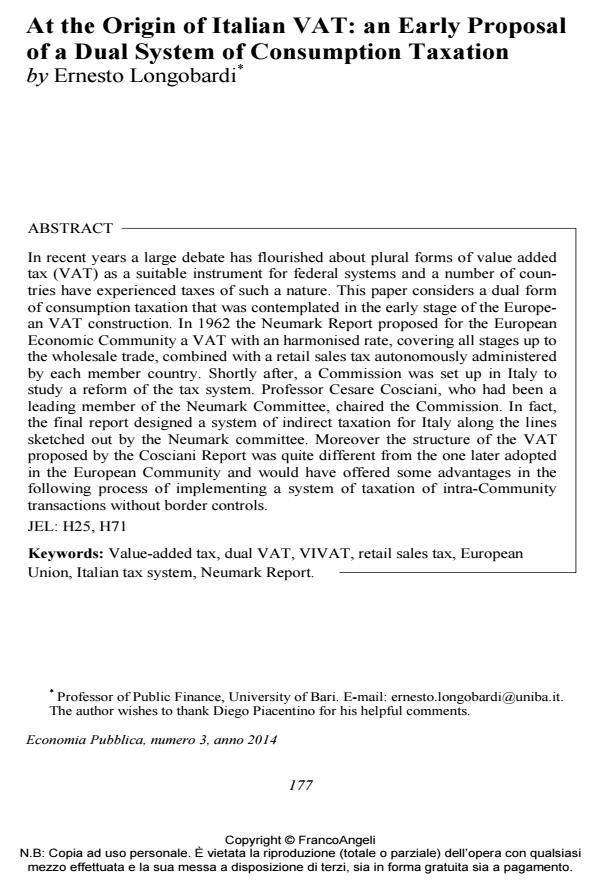At the Origin of Italian VAT: an Early Proposal of a Dual System of Consumption Taxation
Journal title ECONOMIA PUBBLICA
Author/s Ernesto Longobardi
Publishing Year 2015 Issue 2014/3
Language English Pages 23 P. 177-199 File size 201 KB
DOI 10.3280/EP2014-003010
DOI is like a bar code for intellectual property: to have more infomation
click here
Below, you can see the article first page
If you want to buy this article in PDF format, you can do it, following the instructions to buy download credits

FrancoAngeli is member of Publishers International Linking Association, Inc (PILA), a not-for-profit association which run the CrossRef service enabling links to and from online scholarly content.
In recent years a large debate has flourished about plural forms of value added tax (VAT) as a suitable instrument for federal systems and a number of countries have experienced taxes of such a nature. This paper considers a dual form of consumption taxation that was contemplated in the early stage of the European VAT construction. In 1962 the Neumark Report proposed for the European Economic Community a VAT with an harmonised rate, covering all stages up to the wholesale trade, combined with a retail sales tax autonomously administered by each member country. Shortly after, a Commission was set up in Italy to study a reform of the tax system. Professor Cesare Cosciani, who had been a leading member of the Neumark Committee, chaired the Commission. In fact, the final report designed a system of indirect taxation for Italy along the lines sketched out by the Neumark committee. Moreover the structure of the VAT proposed by the Cosciani Report was quite different from the one later adopted in the European Community and would have offered some advantages in the following process of implementing a system of taxation of intra-Community transactions without border controls.
Keywords: Value-added tax, dual VAT, VIVAT, retail sales tax, European Union, Italian tax system, Neumark Report.
Jel codes: H25, H71
Ernesto Longobardi, At the Origin of Italian VAT: an Early Proposal of a Dual System of Consumption Taxation in "ECONOMIA PUBBLICA " 3/2014, pp 177-199, DOI: 10.3280/EP2014-003010